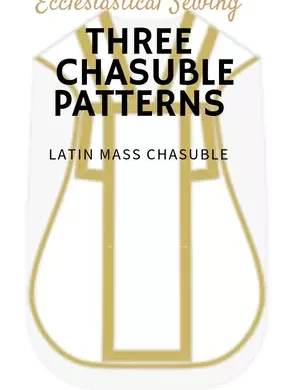
Ecclesiastical Sewing introduces three new Latin Mass Chasuble patterns, meeting requests for traditional vestments. With unique designs from vintage styles, each pattern offers distinct features, such as V-neck trim, a cross design on the back, and a set including chasuble, stole, and maniple. These patterns cater to priests and churches seeking beautiful and traditional worship attire.
Like this:
Like Loading...
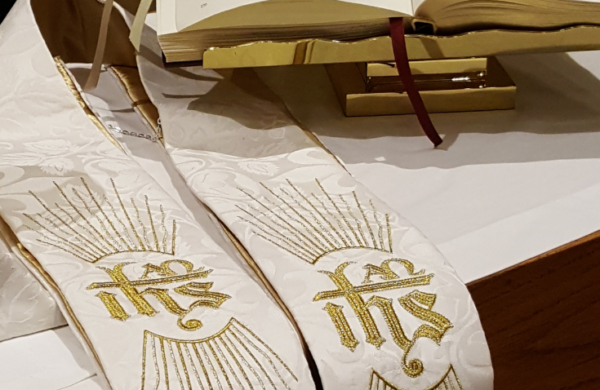
Dayspring is a Collection of Designs intended for use at both Christmas and Easter. Dayspring is a Messianic Prophecy that is fulfilled at the Resurrection. The Dayspring Church Vestment Collection incorporates the IHS Holy Monogram, the Chi Rho Symbols, Alpha and Omega, the Rising Sun, and the Glorious Cross. There are also Angels in adoration. The entire Ecclesiastical Sewing team is honored to have been a part of creating this new Dayspring Collection of Designs for use in your churches for the Christmas and Easter Seasons of the church year.
Like this:
Like Loading...
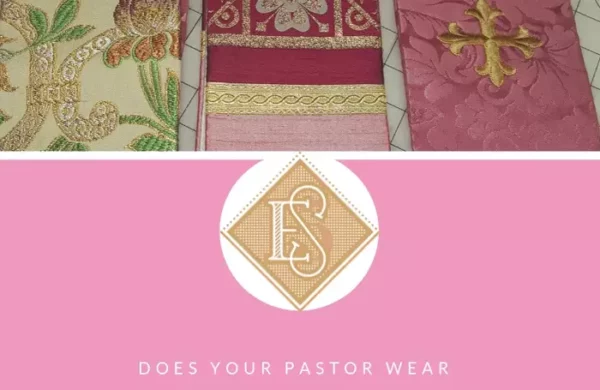
Rose vestments, used in penitential seasons like Advent and Lent, symbolize hope and joy amid our sinful state. Many churches adopt rose vestments, enhancing worship through visual cues and aiding the pastor’s teaching efforts. Embracing the Liturgical Arts helps engage diverse learners, fostering a deeper connection to the beauty of God’s creation and Word in the church.
Like this:
Like Loading...
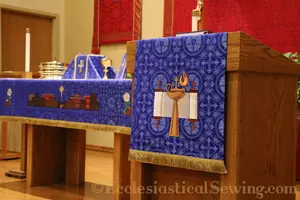
Ecclesiastical Sewing’s new Advent Collection, “City of David,” is a culmination of over a year’s work. Liturgical artist Edward Riojas’ designs were transformed into beautiful stitches using a meticulous process of digitizing and embroidery. With the addition of new frames, the embroidery process became more efficient.
Like this:
Like Loading...
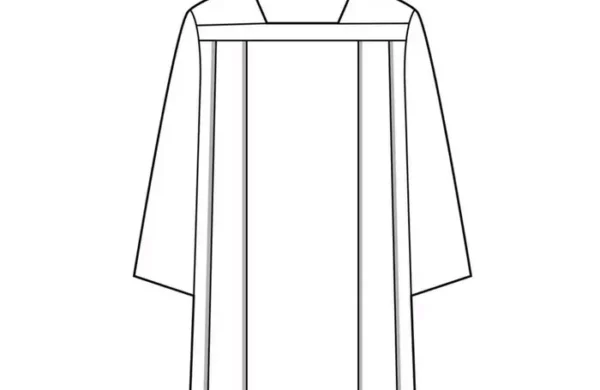
Ecclesiastical Sewing has introduced a fabric called Carlisle, named after a cathedral. It’s affordable, easy to care for, and versatile for making church vestments. It costs less than $25 per yard, is 60 inches wide, and made of 100% polyester. You can use it for various vestment patterns like the Roman Square Yoke Surplice. The Hunter Green Carlisle was used to make a beautiful chasuble with a tapestry orphrey band. It’s great for Albs and surplices, easy to wash, and practical for regular use.
Like this:
Like Loading...
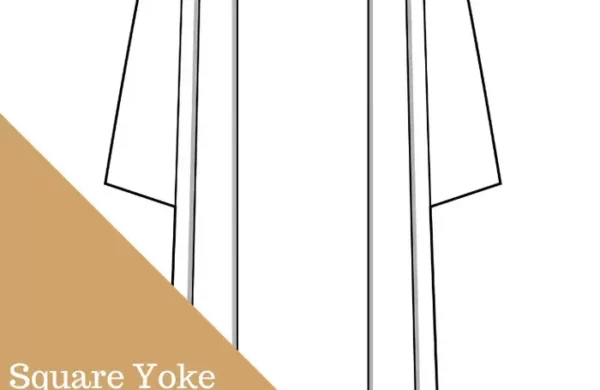
Ecclesiastical Sewing has expanded its offerings with multiple sizes for the Roman Square Yoke Surplice pattern, catering to various chest sizes from Youth Small to XXXL. This initiative aims to support churches in creating their own vestments.
Like this:
Like Loading...
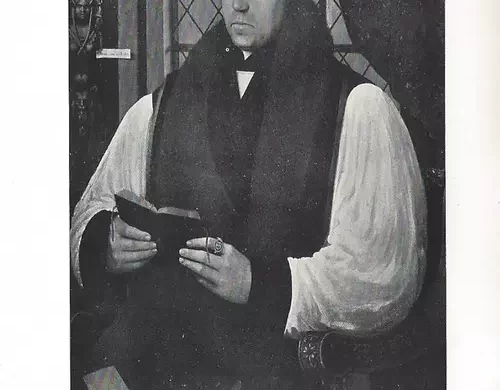
The tippet was originally a form of outdoor dress and it may have been fur-lined. Much of its history has been tied to academic use. Tippets have historically been made of silk fabric. The tippet is generally between 6″ to 10.5″ wide. The softer the fabric, the wider the tippet may be. The ends are usually finished with a plain simple hem. However, in the 19th century, the ends were finished with a zig-zag or pinked end.
Like this:
Like Loading...
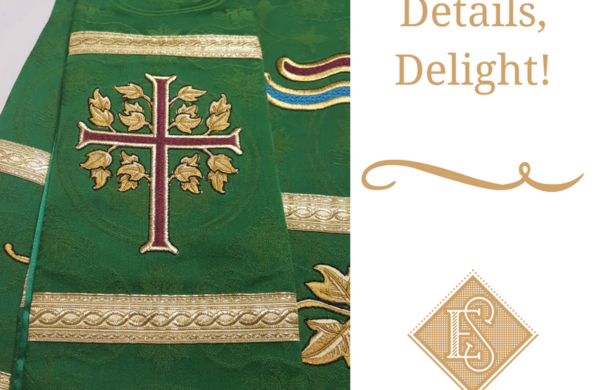
Ecclesiastical Sewing collection of embroidery designs. The designs were created by Edward Riojas, featuring the new Sanctified Collection of Church Vestments.
Like this:
Like Loading...

Pastors and priests come in all sizes from petite to very tall, with many variations in between. Our standard 4 1/2-inch wide clergy stole style is 53 inches long before adding any tassels or trims. The 53 inches is measured from the Center Back neckline to the bottom edge of the stole. The stole length is perfect fit for people who are approximately 5’6″ to 5’11” tall. The 51-inch clergy stole is designed for people who are 5’5″ tall or shorter. The 55-inch stole works well for people who are 6′ tall and over. There are many different stole styles, and the finished length of the stole will also vary based on the selected stole style.
Like this:
Like Loading...
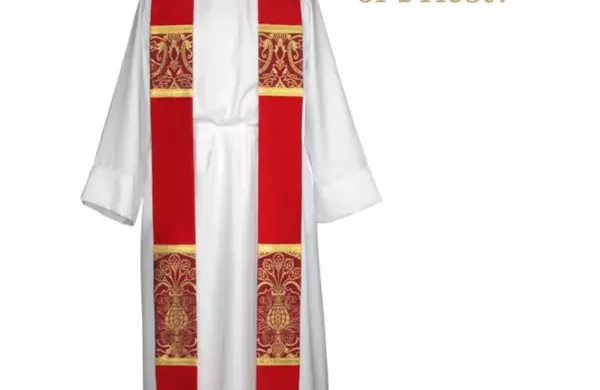
When a new pastor or priest joins a congregation, many churches have a special installation service. Many fellow clergy members join in this celebration to support the new pastor or priest with words from the Holy Scriptures and with the laying on of hands in prayer.
Like this:
Like Loading...
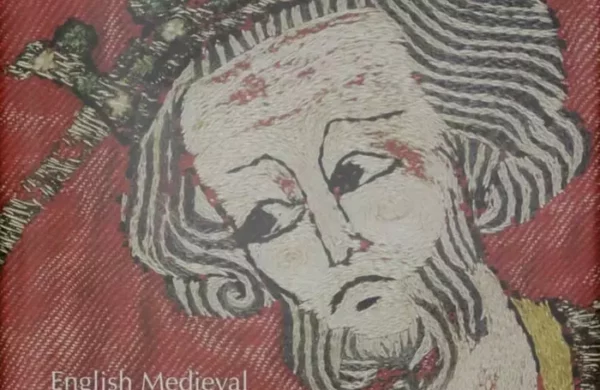
Opus Anglicanum: Medieval Embroidery. Historical embroidery and the restoration work at Hampton Court Palace.
Like this:
Like Loading...
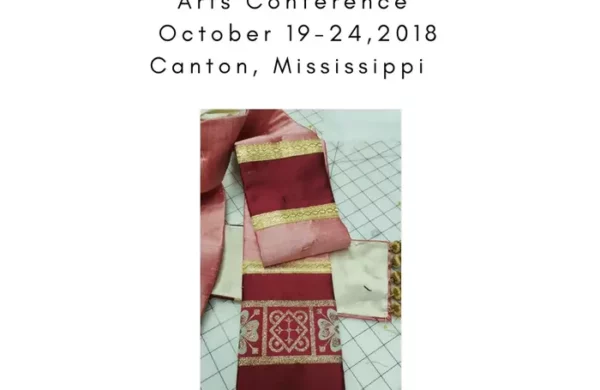
Here is the perfect chance to learn the skills and techniques to make stoles, pulpit falls, and chasubles. You will learn to make vestments using the same techniques we use in our Ecclesiastical Sewing Studios. Join us for a weekend of fun, fellowship, and relaxation as we learn to create beautiful church vestments. We look forward to seeing everyone in the fall!
Like this:
Like Loading...
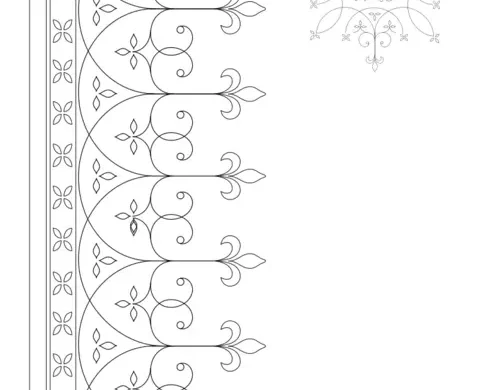
The design consists of a border pattern and a scrollwork cross embroidery pattern. The border pattern comes from my collection of vintage embroidery designs. These vintage designs come in all kinds of shapes, sizes, and conditions. They must be cleaned up and turned into a line drawing to be used as an embroidery pattern. The cross pattern is a new design created from components of the border pattern.
Like this:
Like Loading...
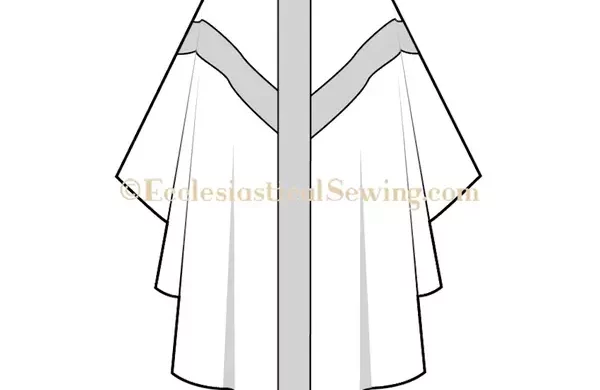
The Gothic Chasuble with the column orphrey band has shoulder seams that are different from the Y orphrey chasuble. They are considered “uneven” shoulder seams with the back seam being at a slightly different angle than the front. This allows for additional drape in the chasuble back and as the sleeves and hems hang, there is more fullness along the sides. The Gothic Chasuble with the Column Orphrey is also a longer chasuble with a 52 to 54-inch finished length. The width of this chasuble is around 54 to 56 inches, so it easily cuts on the fold of a 56 to 60-inch wide fabric.
Like this:
Like Loading...
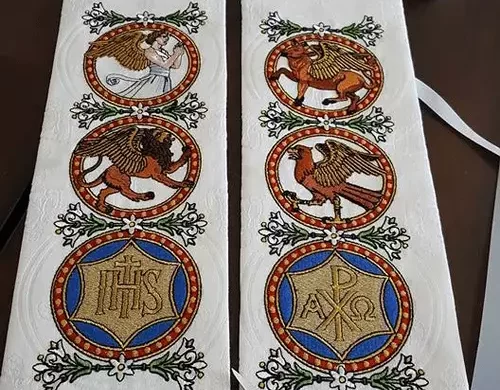
Ecclesiastical Sewing presents “The Evangelist Collection,” a vintage church embroidery designs recreated for a new era. The project, undertaken with artist Edward Riojas, involved restoring missing pieces to complete the original set. The collaboration celebrates history, and devotion, bringing these designs to a new generation for use in worship.
Like this:
Like Loading...
















You must be logged in to post a comment.